For Why Music? The Key to Memory, a partnership with BBC Radio 3, we're exploring what four objects from our collection can tell us about how we remember. Take a look as Sarah Bentley tells Georgia Mann why a papier-mâché figure from Japan holds a key to memory.
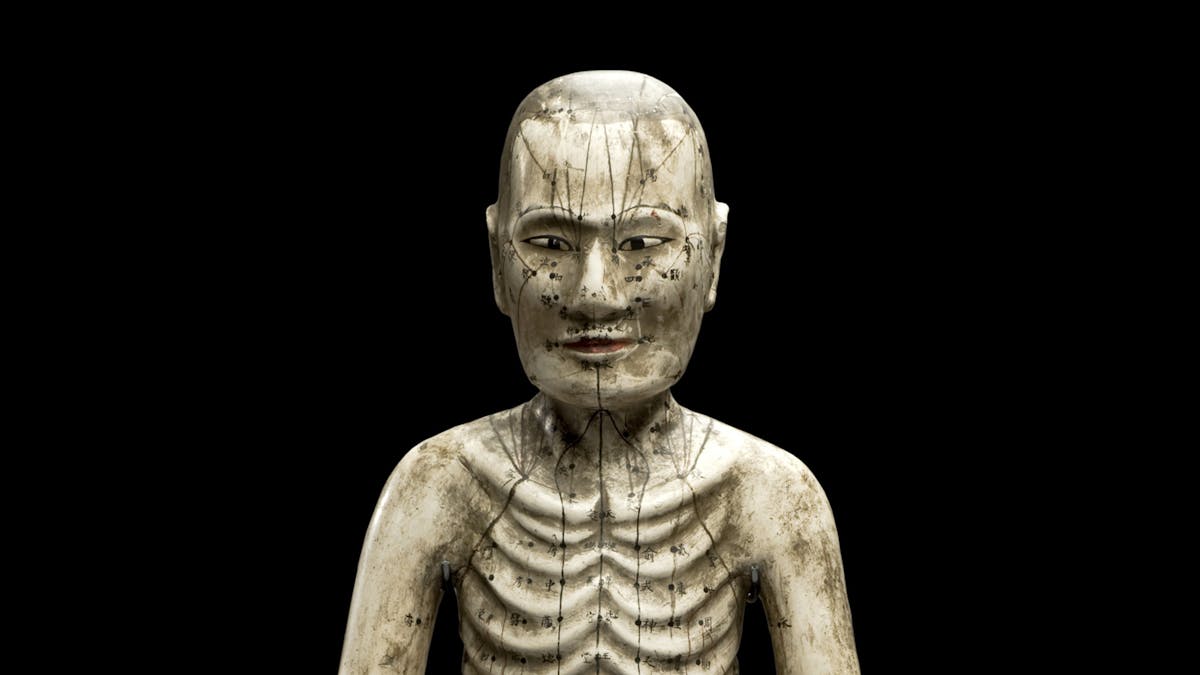
Listen
He's an aid to memory because students of acupuncture or acupressure would use him to locate points, and really burn into their memory where they fell on the body.
Take a look
The Japanese papier-mâché figure is about knee height, with pronounced ribs and a pot belly. You can scroll through some images below, and, if you'd like to meet it in person, you'll also find the figure on display in our Medicine Man gallery.
In pictures
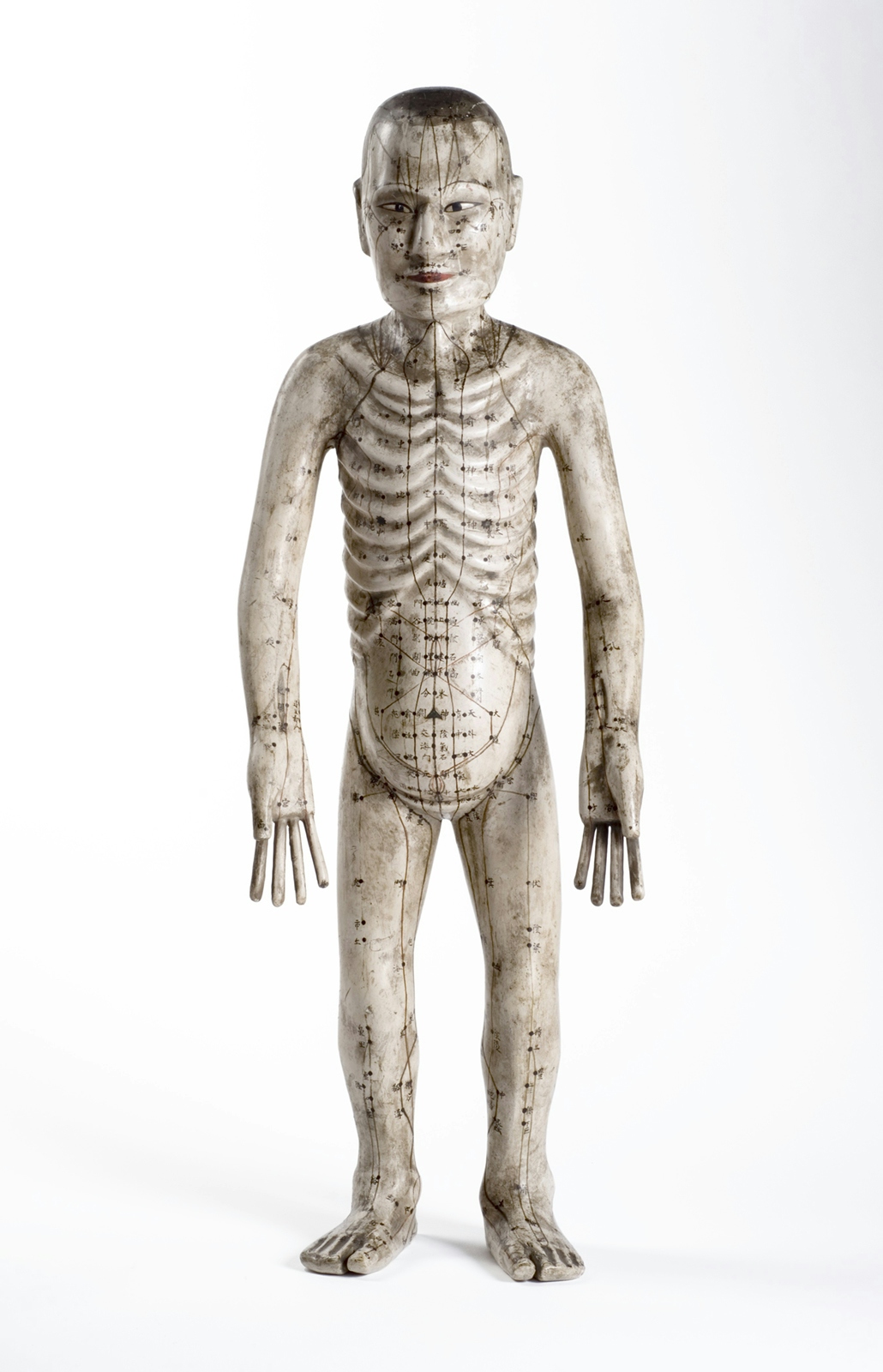
This papier-mâché figure from Japan is marked all over with acupuncture points.
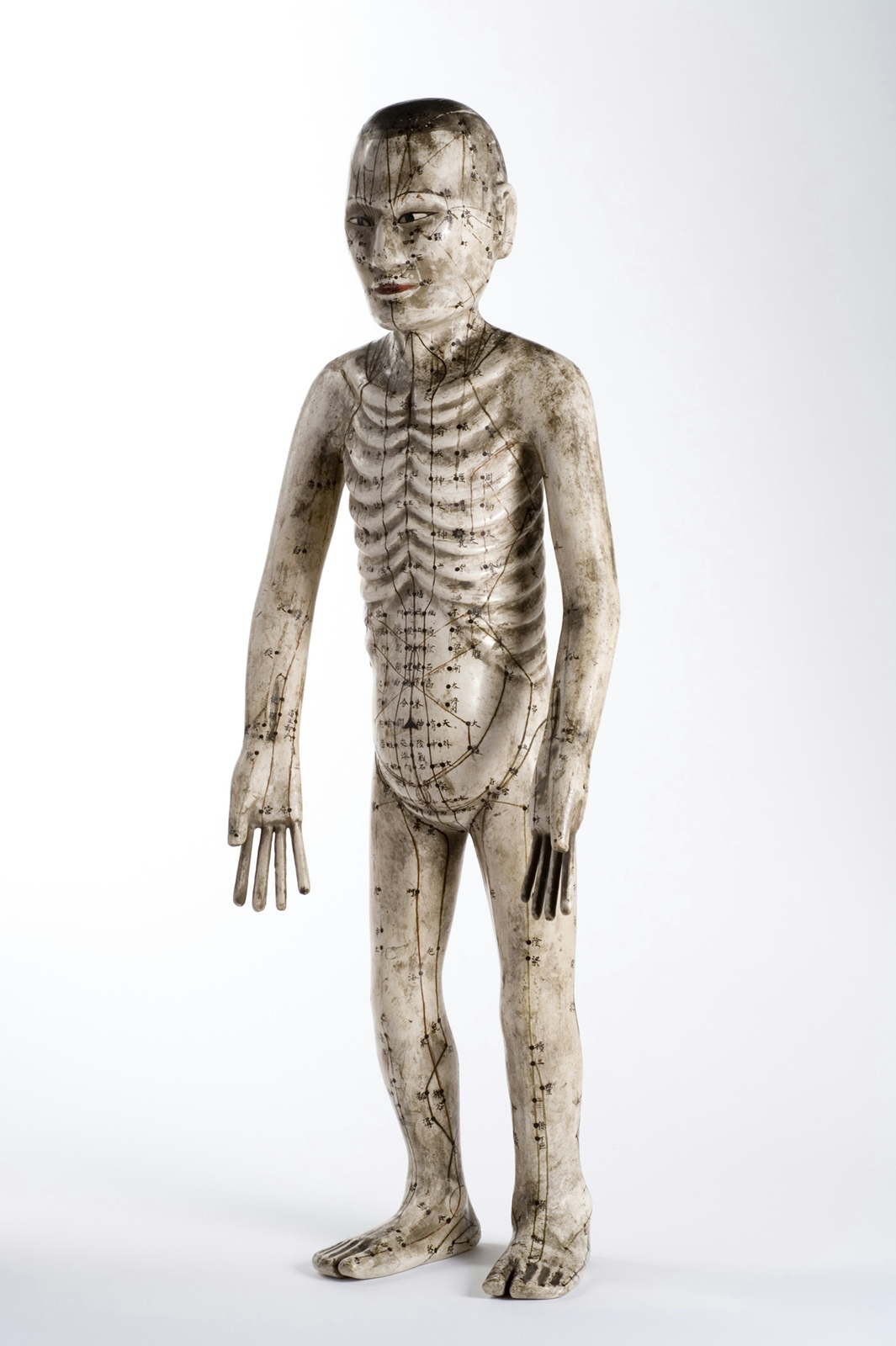
It was used as a teaching tool for students of acupuncture and acupressure to help them identify and remember key points on the body.

Acupuncture involves inserting needles into the body at various points in the paths taken by the 'chi' or 'qi', a life force which, according to Taoist philosophy, flows around the body.
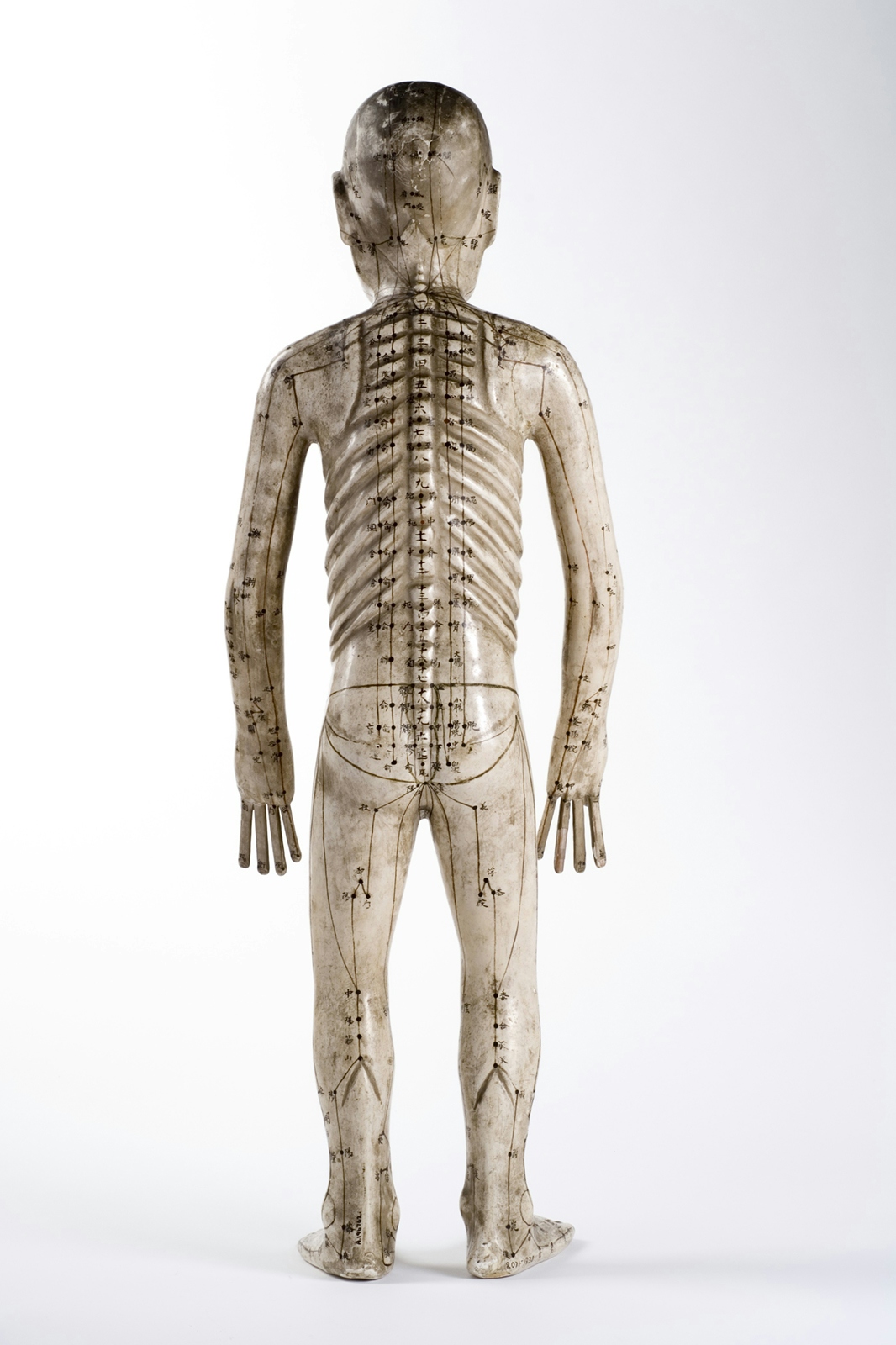
Acupressure uses fingers to apply pressure to key points around the body, rather than needles.
Audio produced by Freya Hellier in collaboration with BBC Radio 3. Why Music? The Key to Memory takes places from 13-15 October 2017.
Full audio transcript
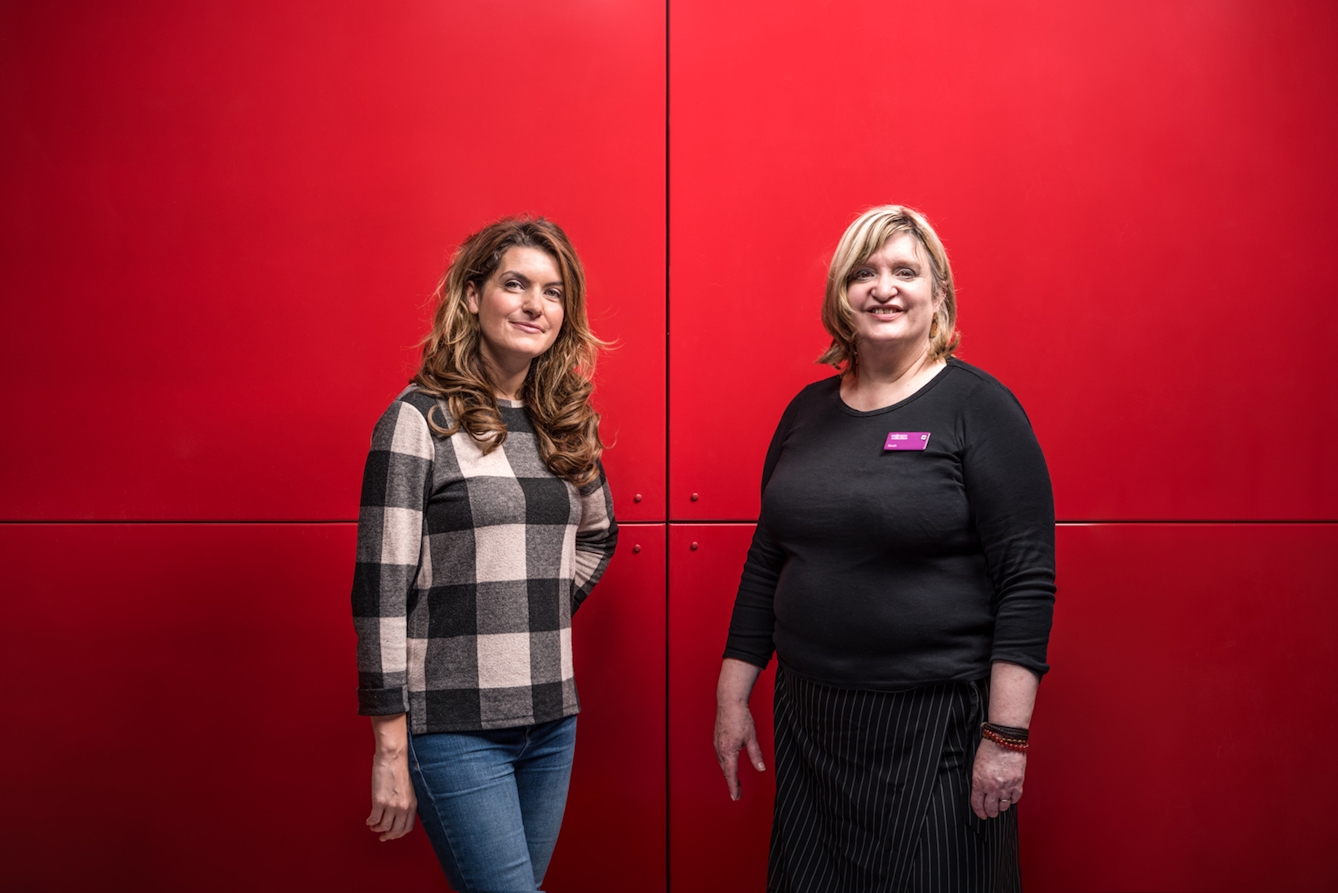
Georgia Mann and Sarah Bentley
[music]
Georgia Mann: Looking at him, you would perhaps think size wise, if he was stood up on the ground, he’d probably come to about knee height on us, wouldn’t he Sarah? And he looks extremely underfed, this poor man.
Sarah Bentley: Yes, yes, the ribcage and some of the other bony outcrops are very over defined, and I’d say also his head is a little bit disproportionately large, and so are his hands. And his belly as well, he’s got a little pot belly.
[music]
Georgia Mann: Sarah, what do we know about our little papier-mâché man? He is beautiful in a rather disturbing way, and covered in black lines and point marks.
Sarah Bentley: Well visitors who first see him are a little bit unnerved by him I think. Sometimes they think he might be a figure connected with witchcraft.
Georgia Mann: He does look a bit voodoo doll.
Sarah Bentley: They wonder why he’s so bony and what these rather purposeful lines that run all over the body do. And he is a memory object, an aid to memory, because students of acupuncture - and he’s Japanese, so it might be students of acupressure in Japan - they would use these to help locate points and really burn into their memory where these points fell on the body.
[music]
Georgia Mann: And presumably, accuracy is pretty much essential I would say, for example, I can see right on his cranium, right at the very tip of the skull, you have to get it right.
Sarah Bentley: Yes, there is a point right up there called Governing Vessel 20, which is on a line called Governing Vessel, sometimes described as a reservoir of yang. And it’s a regulating point for yang, which means it can both calm us down, and also make us more energetic.
[music]
Georgia Mann: Sarah there is a bit of a crossover with this papier-mâché doll and some training that you’ve had in your life, because we know that acupuncturists would have been looking at him - and actually not piercing him, thankfully for him - but you yourself were a shiatsu massage practitioner, you trained a good few years before you started here at Wellcome. That also would have involved having to commit a big feat of memory really, you must have had to retain a hell of a lot of stuff. Did you have an equivalent of the papier-mâché doll?
Sarah Bentley: Mostly we used each other. So, it was very much easier I think to fix things into your mind when you’re working on a human body.
[music]
Georgia Mann: And just the sheer eclecticism of Wellcome Collection must stretch your memory to some degree, because I love the fact that our acupuncture doll is stood between a gilded, Spanish Michael the Archangel, and then to the other side, there is a disemboweled chap with his wooden organs alongside him.
Sarah Bentley: One thing that visitors are interested in is the idea that there is not a separate substance that is mind and another substance that’s body, in Chinese and Japanese medicine. And I think that that is something that can cause problems in our so-called western medicine, that we don’t have a word that’s perhaps a little bit of both. We don’t have a language for that.
Georgia Mann: Interesting yes, that the western example has his organs unpacked next to him and yet our little papier-mâché man is all together isn’t he?
Sarah Bentley: Yes, yes.
Georgia Mann: So there is an awful lot more to this little man than initially meets the eye. Sarah Bentley, thank you so much.